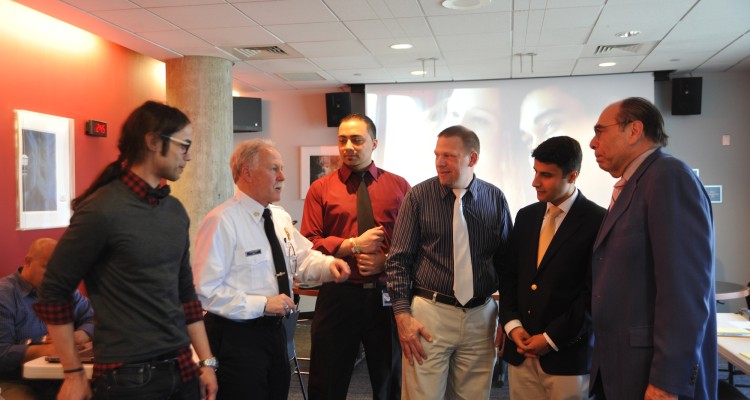Barone Campus Center’s rooms 200, 204 and 206 are commonly used for conference meetings, but this area could be the backup center that would house all communications for the town of Fairfield during emergencies.
The BCC will be used as a secondary emergency operations center (EOC) if the main center becomes inaccessible during a crisis. The second floor of the Fairfield Police Department, on 100 Reef Road, is designated as the town’s primary emergency operations center.
This idea was generated by the University’s Management of Technology (MOT) program in the School of Engineering and was the capstone focus of four MOT graduate students.
According to Dr. Harvey Hoffman, Ed.D, director of the MOT program and supervisor to the project, the idea started in August 2012 when he was brainstorming with Kathleen Griffin, a graduate from the MOT program and an employee for Fairfield’s First Selectman Michael C. Tetreau.
The task was given to graduate students Bandar Almosa, Michael Graham-Cornell, Tarek Abouallaban, and Wael Atarji.
“The whole idea [of the capstone] is to contribute to the community and the school,” Atarji said.
Almosa considers the capstone a “risk mitigation plan – the risk is the inoperability of the primary EOC, and the mitigation plan is a backup EOC.”
The police department’s current location at sea level leaves it vulnerable during natural disasters – a problem recognized after Hurricane Sandy, when the water from the Long Island Sound came within 150 yards of the police station.
Though the project started before Hurricane Sandy, after the storm’s impact Fairfield recognized the need for a backup plan for future emergencies.
Deputy Fire Chief Arthur Reid of the Fairfield Fire Department said: The EOC “doesn’t have to be necessary for only a weather event. It could be for a terrorist attack or a hazardous material spill or anything that would make us need to evacuate [our main emergency center].”
The BCC is an optimal location as it is 200 feet above sea level, according to Almosa. It is also powered by a 24-hour backup generator, as evident during last semester’s Hurricane Sandy when students from the powerless townhouses had to be moved there.
The EOC in the BCC’s rooms could be readily accessible and easily maintained, Dr. Hoffman said.
“BCC is the best candidate that came after an evaluation process of 3 buildings on campus,” eliminating the library, Dolan School of Business and Central Utilities Facility, Almosa noted.
“We are using the resources of the building – [its] electricity, power generator, communication capability and location,” he continued.
The EOC would not only be the town’s backup plan, but also the University’s plan in the case that Loyola Hall’s Department of Safety can no longer sustain itself.
A drill on last Friday, on April 5, was performed to test out key components of the EOC. Dr. Hoffman stressed that the drill would try to alleviate any “communications issue,” during crises.
The town personnel wanted to verify wireless internet and telephone connectivity, confirm the workability of the rooms’ televisions and test out their accessibility to the rooms and BCC’s parking, according to Dr. Hoffman.
At the end of the drill, discovered issues included problems with logging on to the PCs and missing printers and wireless connections.
These issues are easily fixable, Reid said. “I am fairly confident that we could move our operations here today and be able to function out of here.”
Reid said the working relationship graduate students and town personnel contributed to the final product. “We’ve been working very closely with [the graduate students] during the fall semester, up until now,” with the students doing “most of the bulk of the work.”
Almosa said in response to Reid’s statement: “That is exactly the criteria that we aimed to meet. Also, we are glad that Fire Dep. Deputy Chief feels confident about it. Overall, his statement is a very important evaluation to us.”
“We want to thank all the participants in the drill for making it successful and hope that we can continue to provide our services for our community,” added Abouallaban.
Atarji said that ‘the alchemy of synergy’ or the work of the actual innovative team,” made this project possible. “I think the combination of creative energies and the want to perform in high levels could … keep the sustainability of this project in a realistic commitment to excellence.”
The capstone project was supervised by Dr. Hoffman and Associate Professor Mark Ramsey, who teaches a course on information security. Friday’s drill included participants from Fairfield’s fire, police, information technology, public health and public works departments, along with the University’s Department of Public Safety.
A plan for the EOC can be viewed below (courtesy of Bandar Almosa:




Leave a Reply